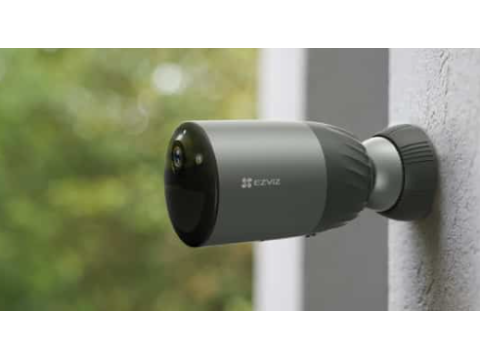Outdoor Surveillance Cameras: Key Features and Installation Guide
Outdoor surveillance cameras face unique challenges such as varying light conditions, extreme weather, and potential mechanical impacts. Selecting the right camera involves balancing technical specifications with environmental factors.
Key Considerations for Outdoor Cameras
Lighting Adaptation
Outdoor cameras must handle variable lighting conditions:- Bright daylight to low-light nights.
- Techniques include:
- Electronic Shutter: Adjusts exposure time electronically; suitable for budget cameras but less effective for fast-moving objects.
- Automatic Iris Adjustment: Regulates light entering the lens, providing superior performance but at a higher cost.
For nighttime surveillance:
- Choose cameras with Day-Night Modes or Infrared (IR) Filters for monochrome imaging.
- Opt for cameras with IR LED illumination or dedicated infrared floodlights for extended range.
Weatherproofing and Climate Resistance
- Outdoor cameras require weatherproof enclosures (IP66 or higher).
- Integrated Options: Preassembled cameras with heaters and fans simplify installation.
- Modular Options: Custom setups with separate enclosures and heating systems offer flexibility but are more complex and costly.
Vandal Resistance
- Use anti-vandal enclosures for high-risk areas.
- Install cameras in hard-to-reach locations to minimize tampering risks.
Essential Features of Outdoor Cameras
Infrared (IR) Illumination
- Essential for nighttime visibility.
- Factors influencing IR performance:
- Beam angle and intensity of LEDs.
- For long-range needs, use IR floodlights for effective illumination.
Motion Detection
- Saves storage space and highlights critical events.
- Detection can be:
- Hardware-based: Built-in motion sensors.
- Software-based: Motion detection on DVRs or IP cameras.
- Recommended for security alerts and efficient data use.
High-Resolution Imaging
- Choose resolution based on application:
- Standard Monitoring: 1080p or 2MP resolution.
- High Detail: 4K for license plates or facial recognition.
- Consider the system’s storage and network capacity when selecting resolution.
- Choose resolution based on application:
Tips for Choosing Outdoor Cameras
Environmental Compatibility
- Match camera features with local climate:
- Heaters for cold regions.
- Cooling fans for hot climates.
- Match camera features with local climate:
Integrated vs. Modular Cameras
- For simple setups, choose factory-assembled cameras.
- For specialized needs, consider modular systems with customizable components.
Size and Visibility
- Avoid excessively small cameras for outdoor use.
- Compact designs may lack essential features like heaters and vandal protection.
Conclusion
Outdoor surveillance cameras provide reliable security when properly selected and installed. Ensure your cameras are equipped for varying light conditions, extreme weather, and potential vandalism. Consider your environment and security needs to create a robust outdoor monitoring system. For advanced installations, consult professionals to achieve the best results.

